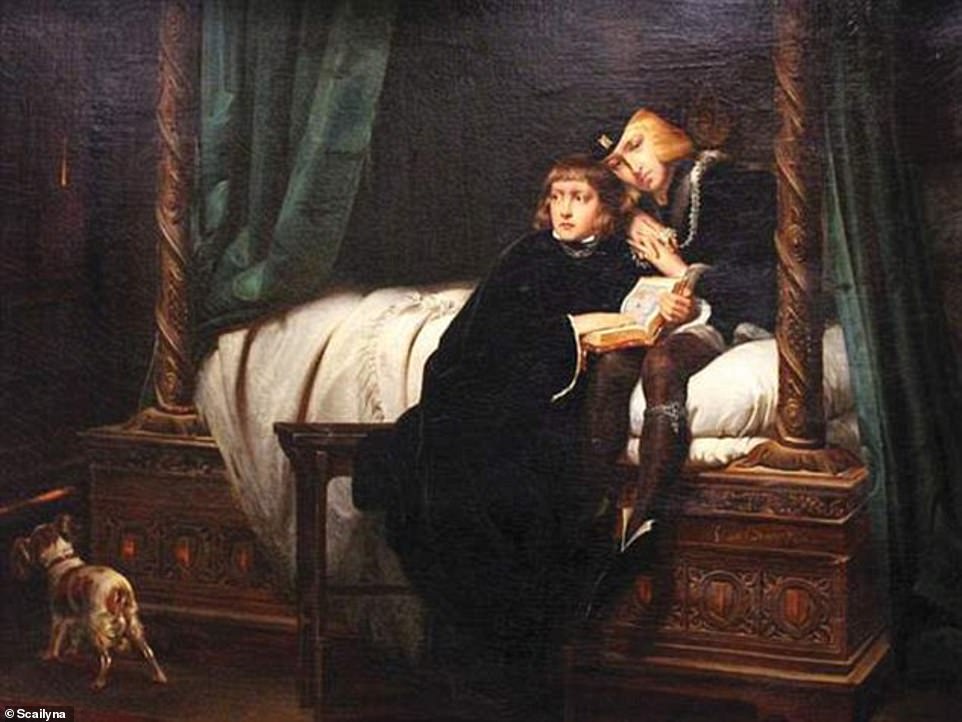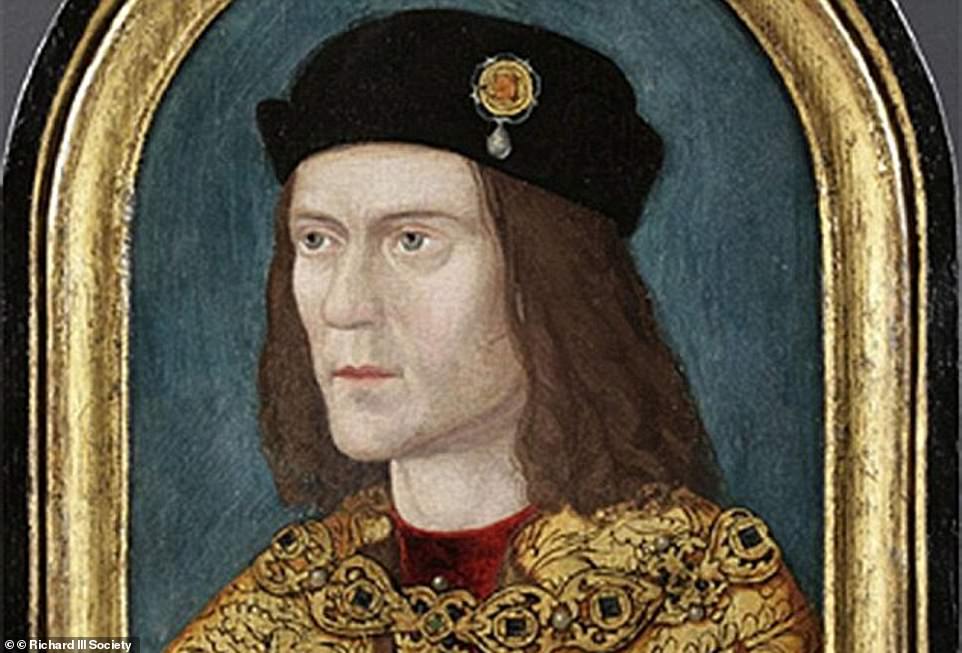Has the mystery of 'the Princes in the Tower' finally been solved? King Richard III DID have a hand in the notorious disappearance of King Edward V and the Duke of York in 1483, study claims
By Joe Pinkstone For Mailonline02 Feb 2021
King Richard III likely did have King Edward V and Richard, Duke of York, murdered when they were just children, an expert believes.
The princes were the sons of King Edward IV and when their father died, their uncle, King Richard III, locked them up in the Tower of London while he acted as regent.
Their disappearance and believed murder in 1483 led to the long-standing 'Princes in the Tower' mystery, the greatest cold case in English history, which rumbles on to this day.
Many believe Richard III had Edward, 12, and Richard, 9, killed in order to take the throne for himself. He went on to become one of the most controversial monarchs in English history.
However, evidence to support this theory has long been debated by experts.
Now, Professor Tim Thornton of the University of Huddersfield has published a study which he claims could prove the 'Princes in the Tower' were indeed murdered by King Richard III.

King Richard III likely did have his nephews, King Edward V and Richard, Duke of York, murdered when they were just children, an expert believes. A new finding backs up the claims the 'princes in the Tower' were murdered by their uncle

The princes were the sons of King Edward IV and when their father died, their uncle Richard (pictured) — then the Duke of Gloucester — locked them up in the Tower of London while he acted a regent. Their disappearance and believed murder in 1483 led to the long-standing 'Princes in the Tower' enigma, the greatest cold case in English history, which rumbles on to this day. A new finding by Professor Tim Thornton adds credence to the book penned by Sir Thomas More in the 16th-century, called 'The HIstory of Richard III'
Sir Thomas More, a trusted courtier of King Henry VIII in the early 16th century, wrote a book detailing the dark saga before he joined Henry VIII's Privy Council, in 1518.
His is the earliest detailed account of the deaths and it unmasks two men as the murderers — Miles Forest and John Dighton — who were acting on direct orders from Richard III.
The book and its findings have been taken with skepticism by historians due to the fact Sir Thomas was five years old when the 'Princes in the Tower' scandal occurred.
It was believed his book and its theory may have been royal propaganda and published as a Tudor scheme to besmirch the name of the former king and boost public support for the new House.
However, Professor Thornton has found evidence the alleged killer Miles Forest had two sons who became courtiers for King Henry VIII and worked alongside Sir Thomas.
Professor Thornton speculates the two sons spoke with Sir Thomas about their father's role in the infamous regicide and told him about the role Richard III played in having the princes slaughtered.
These inside sources allowed Sir Thomas to publish his accusations against King Richard III, who has been portrayed for centuries as a hideous, hunchbacked and disfigured man, in part due to William Shakespeare's depiction of him as a monstrous tyrant in his play, named after the infamous ruler.
'This has been the greatest murder mystery in British history, because we couldn't really rely on More as an account of what happened - until now,' says Professor Thornton.
'But I have shown that the sons of the chief alleged murderer were at court in Henry VIII's England, and that they were living and working alongside Sir Thomas More.
'He wasn't writing about imaginary people. We now have substantial grounds for believing that the detail of More's account of a murder is credible.'
The murder of the two children, one of whom became the monarch when his father died, has captivated public attention for more than 500 years.
They were 'stifled with pillows by the order of their perfidious uncle Richard the Usurper', according to the inscription on the urn their believed remains are kept in.
Their death ranks atop the list of royal misdeeds and scandals due to the rippling side-effects it had on the royal family.

Richard III was behind the 'Princes in the Tower' murder mystery
Professor Tim Thornton of the University of Huddersfield reveals a crucial clue which he believes proves the 'Princes in the Tower' were indeed murdered by their power-hungry uncle.